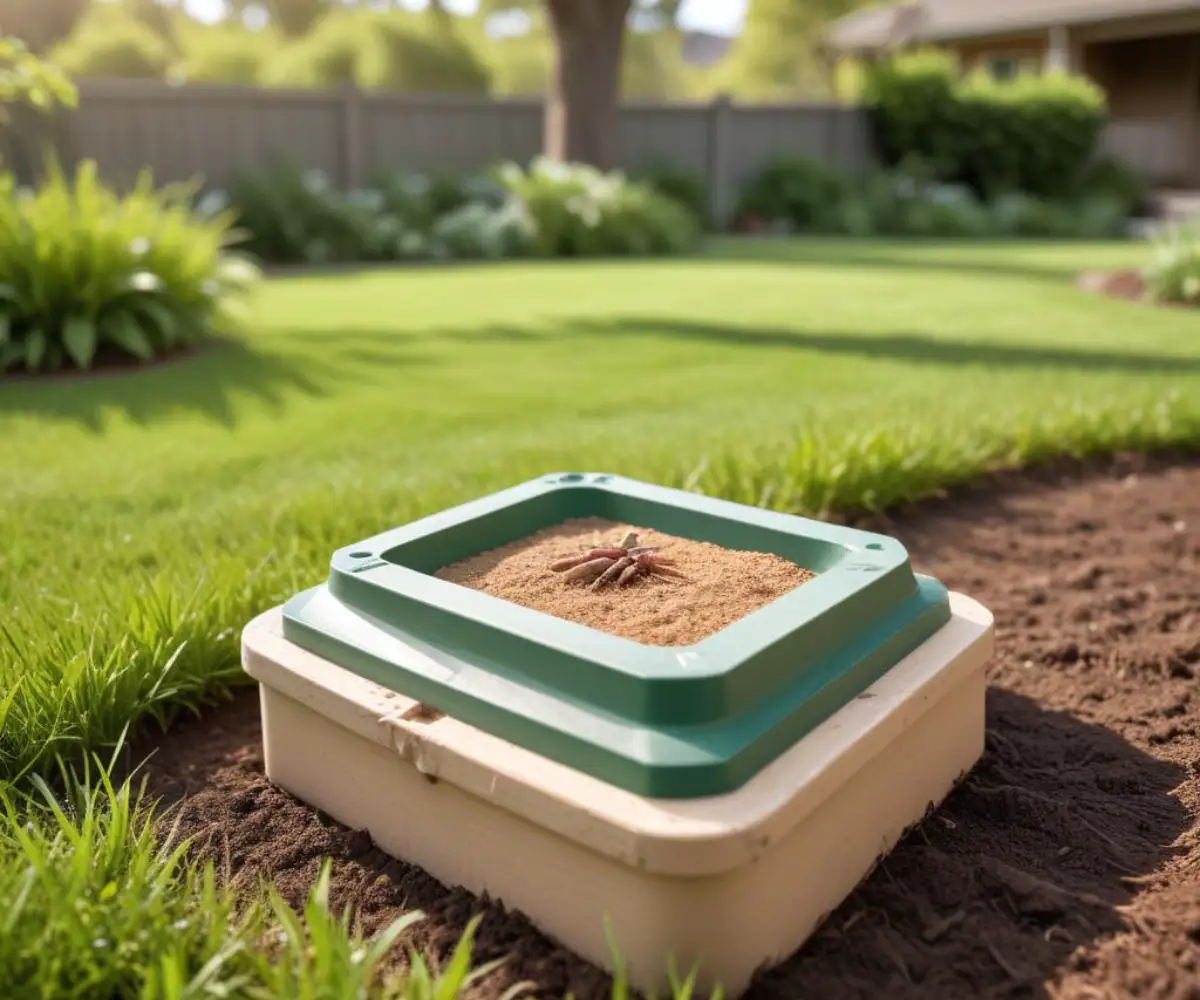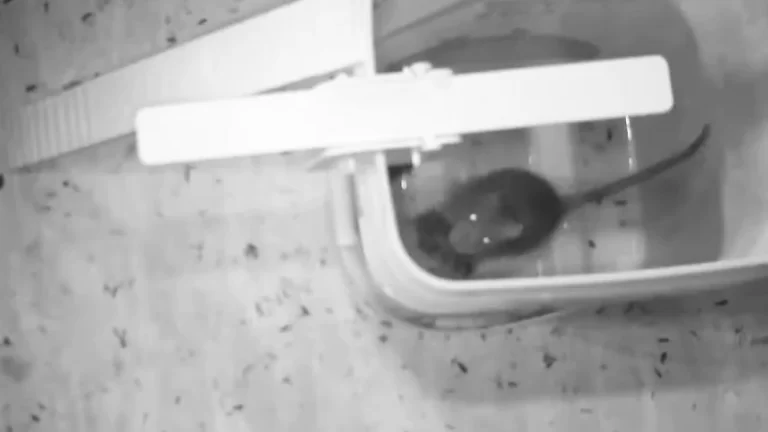Are Termite Bait Stations Worth It? The Unbiased Truth for Homeowners
The thought of termites silently eating away at the structure of your home is a universal fear for property owners. These hidden destroyers can cause thousands of dollars in damage before you even know they’re there. When faced with the threat of an infestation, the flood of treatment options can be overwhelming, leading to one critical question: are termite bait stations a worthwhile investment for protecting your property?
This guide will cut through the noise, offering a clear, comprehensive look at how these systems work. We will explore their true costs, benefits, and drawbacks to help you make an informed decision about the financial and structural health of your home.
You'll Learn About
How Do Termite Bait Stations Actually Work? A Slow and Steady Approach
Unlike liquid chemical barriers that create a toxic perimeter around your home, termite bait stations employ a more strategic, long-term approach focused on total colony elimination. The system consists of several cylindrical plastic stations installed discreetly in the ground around your home’s foundation, typically 10 to 20 feet apart.
Inside each station is a cellulose material, such as wood or a compressed bio-material, which is highly attractive to foraging termites. Technicians regularly monitor these stations for activity. Once termites are detected feeding on the monitoring material, the non-toxic cellulose is swapped with a bait cartridge containing a slow-acting insecticide, specifically an insect growth regulator (IGR).
The “slow-acting” component is the key to their success. Foraging worker termites consume the bait and carry it back to the colony, sharing it with others, including the soldiers and the queen. Because the poison doesn’t kill immediately, the termites don’t associate the bait with danger, allowing the toxicant to spread throughout the entire population, leading to the collapse of the colony.
The Core Debate: Bait Stations vs. Liquid Barrier Treatments
Choosing the right termite treatment often comes down to a direct comparison between bait stations and traditional liquid chemical barriers. Both methods can be effective, but they operate on fundamentally different principles and are suited for different situations. Understanding these differences is crucial to determining which is the better value for your specific needs.
Liquid treatments involve digging a trench around the foundation and drilling into concrete slabs to pump hundreds of gallons of termiticide into the soil, creating a continuous chemical barrier. While this provides an immediate kill zone for any termite that tries to cross it, the process is inherently more invasive and involves a much higher volume of chemicals.
| Feature | Termite Bait Stations | Liquid Chemical Barriers |
|---|---|---|
| Method of Action | Targets and eliminates the entire colony through ingested bait. | Creates a chemical barrier in the soil that kills termites on contact. |
| Speed of Results | Slower; can take several months for full colony elimination. | Faster at stopping immediate activity near the foundation. |
| Environmental Impact | Lower impact; uses small, contained amounts of targeted insecticide only when needed. | Higher impact; involves saturating the soil with gallons of termiticide. |
| Home Disruption | Minimal; small stations are placed in the yard with no drilling into the foundation. | High; requires trenching around the home and drilling into patios, slabs, and foundations. |
| Long-Term Strategy | Proactive monitoring and long-term colony elimination. | Reactive barrier that degrades over 5-10 years and may develop gaps. |
| Best For | Environmentally conscious owners, properties near water, preventative plans. | Stopping a heavy, active infestation quickly, properties with clear access for trenching. |
The Real Costs: Are Termite Bait Stations a Good Investment?
When evaluating if bait stations are “worth it,” the financial aspect is a primary concern. The cost structure is different from a one-time liquid treatment, involving both an initial setup fee and an ongoing service agreement.
Initial installation costs can range from $1,000 to $3,000 or more, depending on the size of your property and the number of stations required. This fee typically covers the professional assessment, the stations themselves, and the labor for installation. Following the initial setup, you can expect to pay an annual monitoring and maintenance fee, which usually falls between $300 and $500. This recurring cost is essential, as it ensures a professional is regularly checking for activity and replacing bait as needed.
While the ongoing fees may seem like a downside, it’s more accurate to view them as a long-term protection plan. This continuous monitoring acts as an early warning system, poised to intercept and eliminate a new colony before it can ever reach your house. When compared to the potential cost of repairing extensive structural termite damage—which can easily exceed $10,000—the annual fee is a sound and justifiable investment in peace of mind.

Key Advantages: When Are Bait Stations the Superior Choice?
There are several scenarios where termite bait stations are not just a good option, but the clearly superior one. Their unique design and method of action provide benefits that other treatments cannot match.
One of the most significant advantages is their environmentally targeted approach. The insecticide is contained securely within the bait station and is only introduced after termite activity is confirmed. This prevents the widespread application of chemicals into the soil, making it an ideal choice for properties with wells, near bodies of water, or for homeowners who are simply concerned about their environmental footprint. The bait is also specifically designed to target termites, making it a safer option for homes with children and pets.
Furthermore, bait stations are designed for complete colony elimination, not just repulsion or localized killing. By killing the queen and the rest of the colony, they remove the source of the problem, offering a more permanent solution than a chemical barrier that termites might eventually find a way around. This makes them an excellent proactive and preventative measure, protecting your home year-round.
Potential Downsides: What Are the Risks and Limitations?
To make a balanced decision, it’s crucial to acknowledge the potential drawbacks of termite bait stations. Their biggest limitation is the time it takes for them to work. The process relies on termites randomly foraging and discovering the stations, which can take several months. Even after they find the bait, it can take additional months for the slow-acting poison to wipe out the entire colony.
This delay means bait stations are often not the best standalone solution for a severe, active infestation that is already causing damage. If you have a visible problem, such as a termite-infested window sill, a pest control professional may recommend a localized liquid treatment to stop the immediate damage while the bait stations work on eliminating the source colony for long-term control.
Another factor is the complete reliance on termite behavior. There is a small but real chance that termites could forage between the stations and find their way into your home without ever discovering the bait. This is why professional monitoring and correct placement are absolutely critical to the system’s success.
Beyond the Basics: Pro-Level Details Most People Miss
The effectiveness of a termite baiting system hinges on more than just the technology itself; it depends heavily on the strategic expertise of the professional installing it. Strategic station placement is paramount. A true expert doesn’t just place stations every 10 feet; they analyze the property for conditions that are conducive to termite activity. They will target areas with high moisture, such as near downspouts or irrigation systems, and identify potential food sources like old tree stumps or landscaping ties.
Furthermore, not all bait is created equal. Different systems use different bait matrices, some of which have been scientifically proven to be more palatable to termites than natural wood. This ensures that once termites find a station, they will preferentially feed on the bait. This expert knowledge transforms a passive monitoring system into an active, strategic defense perimeter.
It’s also important to understand that the best termite management plan is often an integrated one. In complex situations, professionals may use a hybrid approach, combining the immediate stopping power of a localized liquid treatment with the long-term colony elimination of a baiting system. Preventing termite entry points is also part of a holistic strategy. This involves diligent home maintenance, from sealing foundation cracks to ensuring your roof is secure. Attention to detail is key; for example, understanding how long it takes for roof flashing sealant to cure can prevent leaks that create the damp wood termites are drawn to. Even issues that seem unrelated, like when a nail won’t go into a wall, can reveal information about your home’s construction and potential hidden vulnerabilities.
So, What’s the Verdict? Are Termite Bait Stations Worth It for You?
After weighing the evidence, the answer for most homeowners is a definitive yes, termite bait stations are worth it—especially as a long-term, proactive protection strategy. They offer an effective, environmentally responsible method for achieving complete colony elimination and provide invaluable peace of mind through continuous monitoring.
However, the final decision should be tailored to your specific situation. You should seriously consider bait stations if you prioritize long-term prevention, are environmentally conscious, or have property features that make liquid treatments risky or impractical. If you are facing an immediate and severe infestation, a hybrid approach combining bait stations with a targeted liquid treatment may be the most effective solution.
Ultimately, the best course of action is to consult with several reputable pest control professionals. Obtain a thorough inspection and quotes for both baiting systems and liquid treatments. An expert can assess your home’s unique vulnerabilities and help you decide which method offers the best value and protection for your most important asset.

